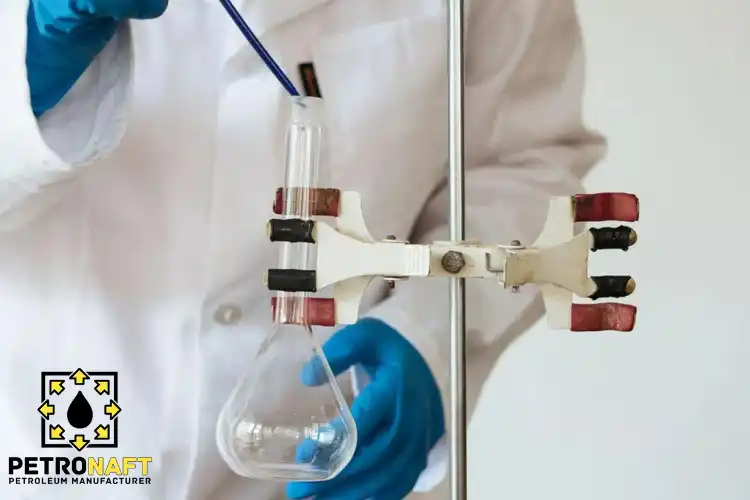Content Overview
Expert Tips on Neutralizing Caustic Soda Safely
Mastering the technique of how to neutralize caustic soda, or sodium hydroxide, is imperative for promoting safety in diverse environments. This article delves into the scientific principles of neutralization, highlights suitable techniques and agents, and provides critical safety guidelines for effectively managing caustic soda incidents.
Understanding Caustic Soda
Caustic soda is a powerful alkaline substance with a wide range of industrial applications, such as in paper manufacturing, soap production, and chemical synthesis. It has a high pH value, making it highly reactive with various substances. Due to its corrosive nature, it is essential to handle caustic soda with care and understand how to neutralize it effectively in case of spills or accidents.
Importance of Neutralizing Caustic Soda
Neutralizing caustic soda is essential for multiple reasons:
Safety: Caustic soda can cause severe burns and damage to the skin, eyes, and respiratory system. Neutralizing the substance minimizes these risks.
Environmental protection: If not neutralized, caustic soda can harm aquatic life and vegetation, making it essential to neutralize spills before they reach water bodies or soil.
Waste disposal: Neutralizing caustic soda simplifies its disposal, reducing its hazardous nature.
How to Neutralize Caustic Soda
The most common method of neutralizing caustic soda involves using an acid, typically hydrochloric acid (HCl) or sulfuric acid (H2SO4). The process involves a neutralization reaction, wherein the acid and caustic soda combine to produce water and a salt. This method is efficient and easy to control, but care must be taken to avoid violent reactions or splashing.
Safety Precautions and Equipment
Before attempting to neutralize caustic soda, it is essential to have the appropriate safety gear and equipment:
Personal protective equipment (PPE): Wear acid-resistant gloves, goggles, face shields, and protective clothing.
Ventilation: Ensure proper ventilation to avoid the buildup of harmful gases produced during the neutralization process.
First-aid kit: Keep a first-aid kit nearby in case of accidents or injuries.
Steps for Neutralizing Caustic Soda
Follow these steps to neutralize caustic soda safely and effectively:
Assess the situation: Determine the extent of the spill and the concentration of caustic soda involved. If the spill is large or in a sensitive area, contact emergency services.
Prepare the acid solution: Dilute the chosen acid (HCl or H2SO4) with water, following safety guidelines and recommendations. Never add water to acid; always add acid to water.
Slowly add the acid solution: Gradually pour the acid solution into the caustic soda, stirring gently to mix the substances. Avoid splashing or violent reactions.
Monitor the pH: Regularly test the pH of the mixture during the neutralization process. Aim for a pH between 6 and 8 to ensure effective neutralization.
Dispose of the neutralized waste: Once the pH is within the desired range, dispose of the waste according to local regulations and guidelines.
Alternative Methods for Neutralizing Caustic Soda
In situations where acids are not available or their use is not appropriate, alternative methods for neutralizing caustic soda can be employed:
Weak acids: Using weak acids, such as acetic acid (found in vinegar) or citric acid (found in lemon juice), can also neutralize caustic soda. However, these methods may require more time and a larger quantity of the weak acid to achieve the desired neutralization.
Dry neutralizing agents: Specialized dry neutralizing agents, like sodium bisulfate or sodium metabisulfite, can be used to neutralize caustic soda. These agents are mixed with the caustic soda to produce a safer, neutralized waste product. Care must be taken to avoid dust formation and to ensure proper mixing.
Neutralizing solutions: Commercially available neutralizing solutions can be used to neutralize caustic soda. These solutions typically contain a combination of acids and buffering agents to provide controlled, safe neutralization.
Handling Caustic Soda Spills on Skin or Eyes
In the event of caustic soda coming into contact with the skin or eyes, immediate action is necessary:
Remove contaminated clothing: Carefully remove any clothing that has come into contact with the caustic soda, avoiding further skin exposure.
Rinse the affected area: Flush the affected area with copious amounts of cool water for at least 15 minutes. Do not use any neutralizing agents on the skin or eyes.
Seek medical attention: After rinsing the affected area, seek immediate medical attention, as caustic soda can cause severe burns and damage.
Preventing Caustic Soda Accidents
Prevention is always better than cure. To prevent accidents involving caustic soda, follow these guidelines:
Storage: Store caustic soda in secure, labeled containers, away from incompatible substances like acids and moisture.
Training: Ensure that all personnel handling caustic soda are properly trained in its safe handling, storage, and neutralization procedures.
Spill response plan: Develop and implement a spill response plan, including the location of safety equipment, procedures for neutralization, and emergency contact information.
Conclusion
Understanding how to neutralize caustic soda is essential for ensuring safety and environmental protection. By following the methods and guidelines outlined in this comprehensive guide, you can neutralize caustic soda effectively and prevent accidents or damage. Always prioritize safety, use appropriate personal protective equipment, and follow proper disposal practices to maintain a safe and secure working environment.
Purchasing from Petro Naft
For more detailed information and to purchase the product discussed in this article, please visit the dedicated product page below. Alternatively, use the various communication channels provided on our site to register your purchase inquiry or take advantage of our expert guidance.
Prepared by the PetroNaft Co. research team.

